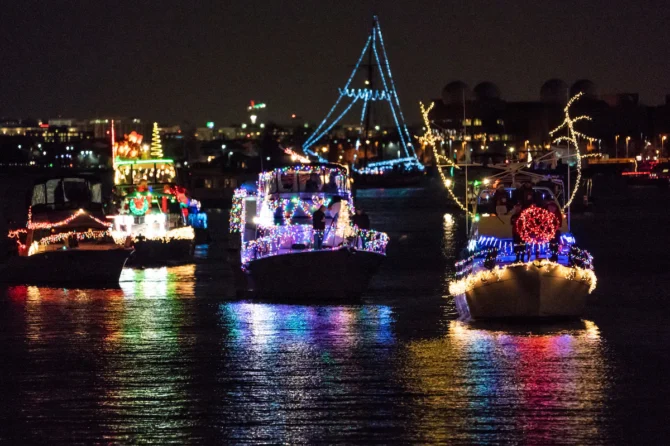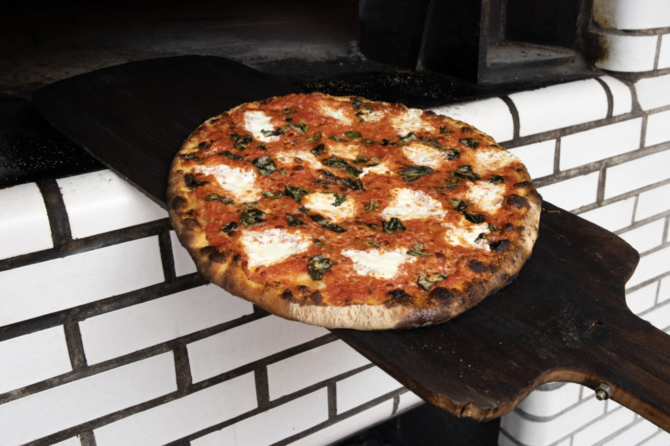May is Asian American and Pacific Islander Heritage Month, and in the D.C. area there are many ways to celebrate and learn about your neighbors.
Asian Americans and Pacific Islanders make up a large percentage of some area counties. More than 20% of the populations of Loudoun and Fairfax counties, in Virginia, identified themselves as Asian in the 2020 census; 6.5% in Alexandria; 11% in Arlington and 9.4% in Prince William County.
In Maryland, more than 19% of Howard County residents identified as Asians, and 15% in Montgomery County.
The U.S. Census defines Asian as a person “having origins in any of the original peoples of the Far East, Southeast Asia, or the Indian subcontinent including, for example, Cambodia, China, India, Japan, Korea, Malaysia, Pakistan, the Philippine Islands, Thailand, and Vietnam.” Native Hawaiian or Other Pacific Islander is defined as a person having origins in any of the original peoples of Hawaii, Guam, Samoa or other Pacific Islands.
That’s a lot of very different places, and Julie Park, the director of the University of Maryland’s Asian American Studies program, said it gets really difficult to pick out a single Asian culture.
“Is there something uniquely Asian or it is much more ethnic-specific?” Park said. Besides very broad regional origins, she said, “There’s really nothing — there’s not language, there’s not religion — there’s really nothing that ties us.”
“What is exciting to me about the AAPI community is that we defy expectations. We have always been hard to define in general,” director of the D.C. Mayor’s Office on Asian and Pacific Island Affairs Ben de Guzman said.
That said, the term Asian American came about in the 1960s as a way of organizing for economic and social justice, a way of “political mobilizing” that has been really helpful and useful for the members of the group, Park said.
In May 2020, PBS aired “Asian Americans,” a series about how Asians shaped the U.S. and their ongoing roles. It aired during the start of the coronavirus pandemic, when incidents of anti-Asian hate started creeping up in the U.S.
Park said the documentary is one way to understand a little bit more national context or historical context of how Asians helped shaped the U.S.
Recently, there’s been a push in the Maryland legislature for Asian American history to be taught in public schools. It’s a start, Park said, in getting a fuller picture of U.S. history and developing an understanding that Asian American history is American history.
“I think it’s really important … that when we teach U.S. history, that we integrate much more the histories of other groups, and we kind of expand the narrative that we have of our history, and that it involves more than just the very narrow history that we get taught,” Park said.
It also creates spaces for people to have a dialogue — a way to get past the “destructive othering” that can obscure the fact that “we’re all Americans.”
“These stories of families and individuals trying to make a life for themselves. I think the exciting thing happens when people see the humanity across groups, to celebrate differences but also to kind of celebrate commonality,” Park said.
How to celebrate Asian American and Pacific Islander Heritage month in the DC area
The D.C. Mayor’s Office on Asian and Pacific Island Affairs will celebrate AAPI Heritage Month with a variety of events.
Details are still being finalized, but de Guzman said the public face of the office’s campaign against anti-Asian violence launches this month.
The District’s AAPI Heritage Month Celebration is scheduled to return to the Lincoln Theatre on May 10. And Chinatown Park will host a summer series of activities, including Tai Chi on Saturdays.
Finally, there will be a food event later this month, called Foodelicious, “a kind of chef demonstration event,” de Guzman said.
Visit the Mayor’s Office on Asian and Pacific Island Affairs’ social media pages for the latest updates.
Below are some events in the D.C. area that celebrate AAPI Month.
Meditation and Mindfulness
The Smithsonian’s National Museum of Asian Art offers a free 30-minute online meditation session led by D.C.-based meditation teachers. Register here.
Asian American & Pacific Islander Heritage Festival
May 1 from 11 a.m. to 4 p.m. The Chrysalis, Merriweather Park at Symphony Woods, Columbia, Maryland. Free.
The festival will have cultural performances, food vendors, activities, community organizations and more.
Memory, Experience & Imagination in Works of Lao & Hmong American Authors
May 2 from 6:30 to 8 p.m. Online. Free.
Organized by the Library of Congress, this event provides a unique forum for Lao and Hmong American authors to discuss their work and intellectual endeavors.
Lei Day and Native Hawaiian History
May 2 from 7 to 7:30 p.m. Virtual. Free.
Learn about the lei and Native Hawaiian history. Brought to you by Prince George’s County Public Library.
May 3 from 6:30 to 7:30 p.m. Free.
Celebrate hanami, the traditional Japanese custom of flower viewing. Go on a virtual tour of the National Museum of Asian Art’s Japanese collections.
May 3 from 7 to 8:40 p.m. George Mason Library, Fairfax, Virginia. Free.
Organized by the Fairfax County Public Library, a screening of the film starring Awkwafina.
May 5 from 6:30 to 8:30 p.m. Streaming. $30/$35.
Examine how differences in practice among Buddhism’s various schools were expressed through art. Part of Smithsonian Associates Streaming series.
Short Stories Full of Fantasies and Memories
May 7 from 10:30 to 11:30 a.m. Patrick Henry Library, Vienna, Virginia. Free.
Author Pu-Chin Waide, who moved to D.C. and raised a family here, shares her collection of short stories, which give glimpses of the places in Asia and elsewhere where she has lived.
May 7 from noon to 9 p.m. and May 8 from noon to 7 p.m. Dulles Expo Center. $5.
Includes shopping, live entertainment and cuisine from the South Asian continent.
May 9 from 7 to 8 p.m. Virtual. Free.
Brought to you by the Prince George’s County Public Library, a filmmaker documents the journey to uncover an Academy Award-winning color documentary about World War II China that has been lost for decades. For adults.
“Dear Corky”
May 10 at 6:30 p.m., Martin Luther King Jr. Library, 901 G St. NW, Washington, D.C. In-person and livestreamed.
The DC Public Library and the 1882 Foundation offer a screening and discussion of the short documentary “Dear Corky,” about photographer Corky Lee. Register here.
Asian Americans and the Model Minority Myth
May 10 from 6:30 to 7:30 p.m. Virtual. Free.
Dr. Julie Park, director of the Asian American Studies Program at the University of Maryland, on the origins of the model minority myth and how it is perpetuated today. From the Prince George’s County public libraries.
Food for the Body and Soul: Advocating for Community through Culinary Traditions
May 10 from 6:45 to 8:15 p.m. Streaming. Free.
Chef Janet Yu talks about recipes, her work preserving Chinese food culture and mentorship. Part of Smithsonian Associates Streaming series.
May 14 from 1 to 3 p.m. Martin Luther King Jr. Memorial Library, Washington, D.C. Free.
D.C. Public Library presents Disney’s “Moana” for children and their caregivers. Limited to 50 attendees. Registration required.
May 15 at 7 p.m. Songbyrd Cafe, Union Market, 540 Penn St. NE, Washington, D.C. $12.
A Smithsonian Folkways artist. No-No Boy is the musical project of Vietnamese American singer and scholar Julian Saporiti. Part of the Smithsonian’s Asian Pacific America Music series.
Asian Festival on Main: Food & Arts in the City of Fairfax
May 15 from noon to 6 p.m. 10417 Main St., Fairfax, Virginia
Outdoor event on Main Street in Historic Old Town Fairfax City. Food, performances, arts and crafts, games and more.
A Virtual Visit with Author Huda Fahmy
May 26, 7 to 8 p.m. Virtual. Free.
From the Alexandria Library, author Huda Fahmy talks about her graphic novels, including her newest book “Huda F Are You?” — a fictionalized memoir on coming to terms with how the main character feels about her family, faith and how she defines herself.
May 31 from 4 to 5 p.m. Arlington Public Library, Shirlington Branch
Learn about Japanese American Sculptor Ruth Asawa with a story about her and her wire sculptures and nature-inspired creations. For families with children 5 to 12 years old.
AAPI Month and beyond
There are plenty of other places to experience Asian American history. Sojin Kim, curator of the Smithsonian Center for Folklife and Cultural Heritage, shared some activities to check out any time of the year:
- Old Korean Legation Museum — Schedule tours of the building and exhibitions. Free.
- Congressional Cemetery — Nearly 100 Chinese were interred there between 1896 and 1938. They were among the first migrants from China to D.C. and their remains were later exhumed according to Chinese traditions and shipped back to China for reburial where families could provide essential ancestral rites. You can see a memorial to mark where they were buried.
- Japanese American Memorial to Patriotism During World War II — New Jersey Avenue, near the U.S. Capitol.
- Manila House — On K Street in Foggy Bottom. A gathering place for Filipino Americans from the 1930s to 1950s.
- AAPI music.
- AAPI Playlist from the Smithsonian.
Read more articles like this at WTOP.










